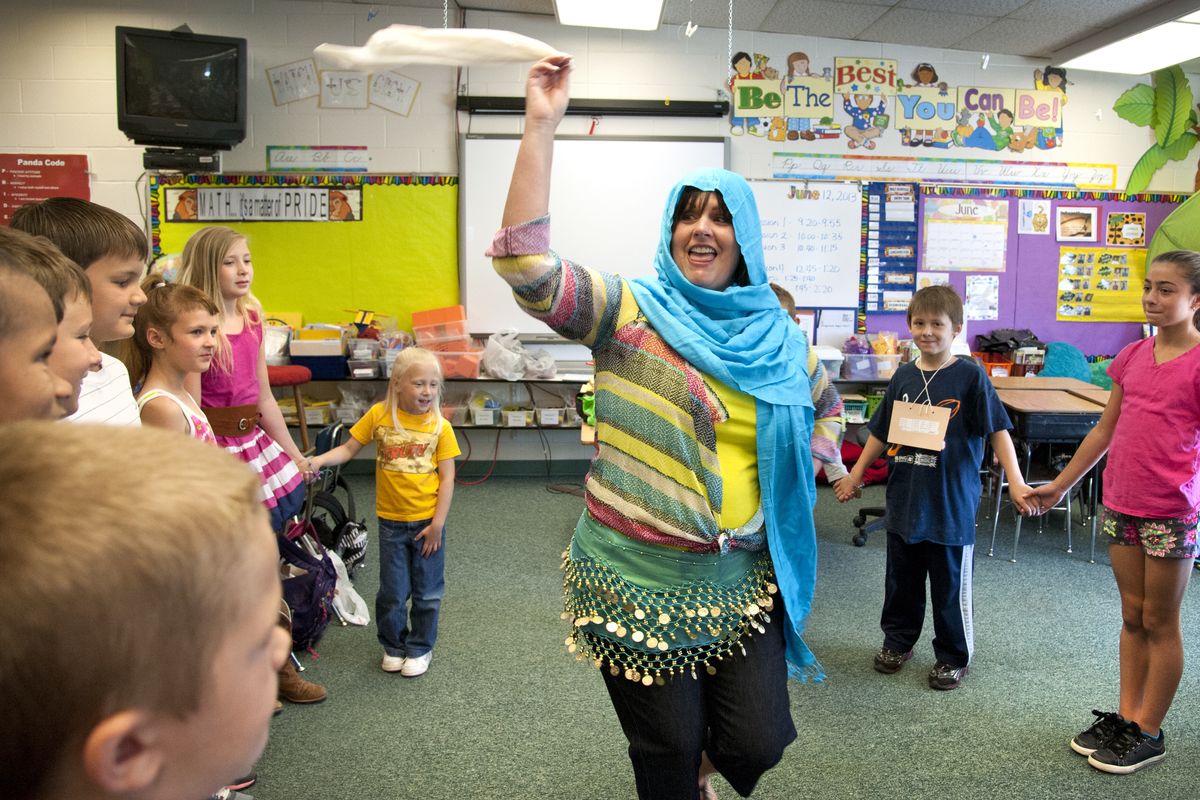Elementary students explore many lands at Opportunity

At Opportunity Elementary School, second-grader Philip Rogers tried zalabee, a Lebanese fried bread, for the first time.
“It tastes like toast,” he said while he wiped syrup from his face.
“I want to make another one,” said Sam Duran Navarro.
The two were learning about Lebanon in Laurie Speck’s classroom during the school’s annual International Day.
Teachers described to students the culture, foods, music, clothing, language and other aspects of a country. There were about 25 countries represented.
Each student has a passport and itinerary to make about five 40-minute stops. Students get a sticker at each stop.
Sam said he was having trouble finding the classroom discussing Lebanon. A teacher pointed him in the right direction.
“He said, ‘Find the flag that has a tree on it,’ ” he said the teacher told him.
Principal Mandi Poindexter said students and teachers look forward to the event every year. The school has a large international population, with students from at least 15 nationalities.
“They gain an understanding of other people,” Poindexter said.
Josh Kaiel showed students plates of shrimp chips, peppers, squid and durian, a smelly fruit with a creamy flavor – all foods people eat in South Korea.
“If you go to the movie theater, this (the squid) is one of their snacks that they eat,” he told them. Kaiel said he used to live in South Korea and taught English in an all-girl public school.
In Dina Murphy’s class about Japan, students learned origami. In Speck’s class, they made Lebanese bracelets of worry beads called kombolói, a fidget toy used to relieve stress. In Heather Brayman’s class about Italy, students made Venetian carnival masks.
Poindexter said one of the benefits of the day is that students – especially kindergartners and first-graders – usually meet their teacher for next year.
“It took two months to schedule,” Poindexter said.
In Speck’s class, students wrapped up their session learning the Dabke.
“We do this dance at weddings,” said Speck, who is half Lebanese. They all gathered in a circle, held hands, stomped their right foot twice and jumped to the right twice.
Sweeney said she wasn’t sure what her favorite part of the class was going to be before the Dabke.
“I think it’s going to be the dancing,” she said.